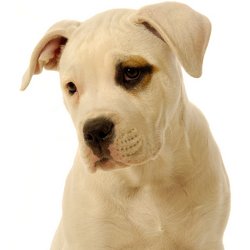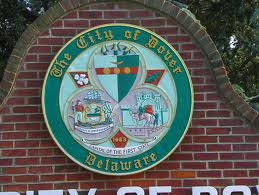Dover’s ordinance proposal will restrict certain dogs by breed, will require those specific breeds to be licensed/registered and securely enclosed on the owner’s property and muzzled/chained when off the owner’s property, will prohibit convicted felons from owning “dangerous breeds,” and will require all dogs to be microchipped. According to Dover’s ordinance proposal,
Dangerous Breed Dogs shall mean:
(1) Akita, Cane Corsa, Chow-Chow, Doberman Pinscher, Mastiff, Pit Bull Terrier, Presa Canario, Rottweiler, any Staffordshire terrier; or a mix of any of the specified breeds; and (2) Dogs which have been registered at any time as any of the specified breeds; and (3) Dogs which have the appearance of being predominantly of the breed of dogs as listed on the dangerous breeds list. A dog shall be deemed to have the “appearance of being predominately of the breed of dogs” if the dog exhibits the physical characteristics which substantially conform to the standards established by the American Kennel Club
or the United Kennel Club for any of these breeds.
If there is some question as to the dog’s breed at the time of seizure, the determination shall be made by the Kent County S.P.C.A. If officials classify the dog as one of the dangerous breeds the owner must, within 48 hours of notification that the dog is deemed to conform to the above definition and before redemption of said animal from the Kent County S.P.C.A., register the dog according to the special requirements for dangerous breed dogs outlined in this chapter…
MICROCHIPPING
(a) No person residing within the city shall possess, own, harbor or care for an animal over the age of four months unless such animal can be identified by a recognized microchip that has been implanted in the animal by a licensed veterinary facility or the Kent County S.P.C.A. and has been allocated a unique identification number and registered with the Kent County S.P.C.A. pursuant to the following procedures:
…(d) (1) Every dangerous animal shall be confined by its owner or authorized agent of its owner within a building or secure enclosure and, whenever off the premises of its owner or the owner’s agent, shall be securely muzzled and be restrained with a chain having a minimum tensile strength of 300 pounds and not more than three feet in length, or be caged. Every person harboring a dangerous animal is charged with an affirmative duty to confine his animal in such a way that children do not have access to such animal.
Sec. 18-17 Ownership of Dangerous Breed Dogs, Dangerous dog or animal by Persons Convicted of Felony Crime of Violence and/or a Felony Drug Conviction
No person convicted of a felony crime of violence and/or a felony drug conviction within the past ten (10) years shall be permitted to own or possess a dangerous breed dog or dangerous dog or animal. Sec. 18-18 Special Requirements for the identification and registration and ownership of Dangerous Breed dogs. (a) Only persons 21 years of age or older who have complied with the licensing and identification and registration requirements, shall be allowed to own, keep or harbor a dangerous breed dog inside the city limits.
Such ownership is subject to the following conditions:
(1) All dangerous breed dogs in the city must be licensed, identified and registered within six (6) months of the adoption of this chapter. 0. Newly acquired dangerous breed dogs or dangerous breed dogs belonging to people moving into the city must be licensed, identified and registered at the Kent County S.P.C.A. within 30 days of the event. Documentation showing acquisition of the new dog (bill of sale or adoption contract) and/or relocation to the city, as evidenced by a signed lease or purchase agreement, will be required to identify and register a dangerous breed dog after June 16, 2000 the adoption of this chapter. For purposes of registration, the owner shall provide the following:
(a) A photograph of the animal showing its size and color;
(b) Proof of owner’s age through valid state issued identification card (e.g., driver’s license) or certified birth certificate;
(c) Proof of owner’s address through two documents, one of which must contain a photograph, the other being in the form of a utility bill, mortgage payment or lease;
Comment [R36]: Taken from Wilmington 3-16, these are the ownership provisions that will apply to owners of dogs.
Comment [R37]: All date references will have to be modified when a final draft is prepared. (d) Certification by a licensed veterinarian that the dangerous breed dog has been identified by the implantation of a recognized microchip in accordance with the provisions of this chapter and the identification number of that microchip. (e) Certification by a licensed veterinarian that the dangerous breed dog has been neutered or is incapable of enduring neutering (in the case of a male dog) or the dangerous breed dog has been spayed or is incapable of enduring spaying (in the case of a female
dog). Under no circumstances shall a dangerous breed dog that has not been neutered or spayed be registered, except where the dog meets the criteria of subsection
(2) of this section. A provisional registration will be issued valid through the date the dog reaches six four months of age if the dangerous breed dog is incapable of enduring the procedure because it is too young as certified by a licensed veterinarian and all other registration requirements have been satisfied. The dangerous breed dog shall be fully registered subject to undergoing the procedure within the effective period of the provisional registration; veterinarian certification shall be provided no later than ten days after the procedure has been performed while the provisional registration is in effect; and
(f) Proof of home ownership (e.g., deed, homeowner’s policy, mortgage coupon) or lease with express written permission from the landlord allowing
said dog to be harbored on the premises.
(2) A provisional registration will be granted for a period of 12 months, subject to renewal, if the following criteria are met:
a. The dog is American Kennel Club (AKC) and/or United Kennel Club (UKC) registered and has actively competed as a show dog in either AKC or
UKC sanctioned events within the past year;
b. The dog has passed a dog obedience class;
c. The dog is certified annually as a “canine good citizen” by the AKC; and
d. The owner has complied with the registration requirements set forth in subsection (1)(a), with the exception of (1)(a)e.
*Please contact the Dover mayor and city council members and tell them that there is no evidence that any one breed of dog is more dangerous than another, that SPCA representatives are not qualified to make breed determinations (especially not by using AKC or other breed clubs breed standards which are copyrighted), and that breed-specific legislation is ineffective and unenforceable.

